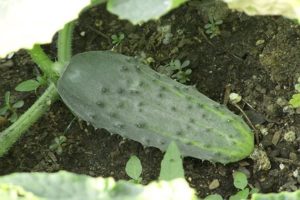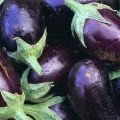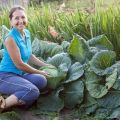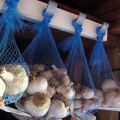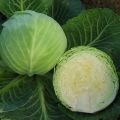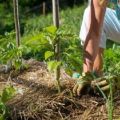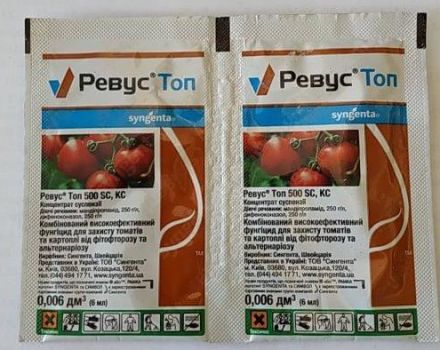Description of the Mexican cucumber variety, cultivation features and yield
An exotic vegetable The Mexican cucumber has already adapted to the gardens of Russian gardeners and gardeners. It is not only tasty, but also healthy - it contains a large amount of vitamins and minerals. What kind of vegetable it is and how to grow it, we will find out further.
Description of the fruit and bush
Perennial plant of the pumpkin family. Brought and adapted in our climatic zone from Central America. But now it is grown all over the world. The fruit of the Mexican cucumber looks like a pear. The inside of the vegetable has a juicy flesh, the taste resembles an ordinary marrow.
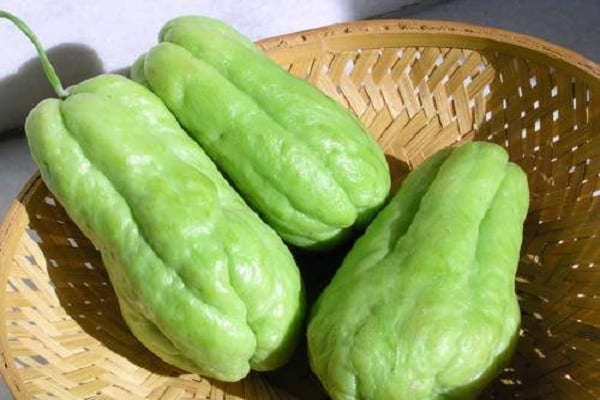
It is grown in the Black Sea region and in the Krasnodar Territory. Georgia is also famous for these fruits. Plants look like lianas or cucumber whips, maybe that's why Chayote was piled with Mexican cucumber. When grown, the lashes reach a length of up to 20 meters; as they grow, long tendrils appear on the lashes, with which the vine clings to the hedges and grows. The leaves are round - up to 10–25 centimeters wide; pubescence with bristles is visible on the surface.
Flowers of female and male type, cream color. Flowering lasts 3 months - from July to September, and the fruits are harvested until December, as they keep well in cool weather. You cannot leave vegetables in the garden if frosts are expected.
Unlike ordinary plants, two crops are harvested from Chayote - aboveground and underground. Potato-like tubers are formed in the ground, the taste of which is reminiscent of a potato or cucumber. Up to 10 kilograms are dug from one bush. The color is light green or yellow, up to 80 pear-shaped vegetables are removed from the bush at the age of five. Moreover, the weight of one vegetable reaches 1 kilogram.
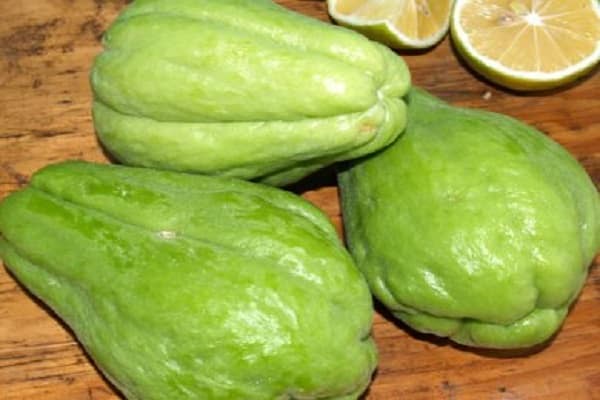
The aerial part of the liana produces fruits that look like a pear in appearance with a zucchini flavor. Many first and second courses, side dishes are prepared from them. Also, this vegetable is often used to treat diseases.
The use of fruits in cooking
Almost all parts of the plant are used to prepare various dishes, except for the stem. Various salads are prepared from the leaves, the tubers are used for making pancakes or ground into flour, since they contain a large amount of starch. So, the shelf life of tubers is much shorter than that of aerial fruits, then the tubers are dried and ground into flour for dietary nutrition.
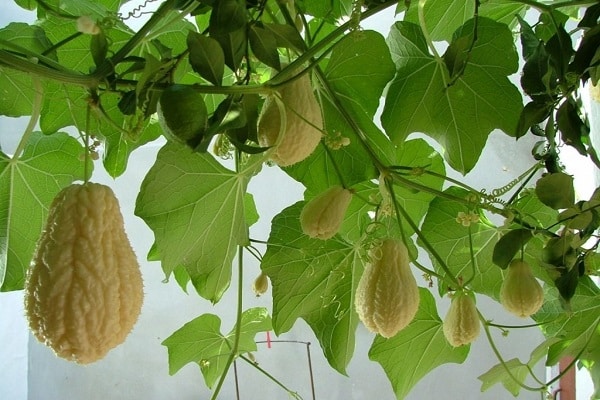
Aboveground fruits are stewed, fried, added to soups and pickled. Chayote's flavor goes well with tomatoes, so these two vegetables are often stewed together and used as a side dish for meat dishes. Sauces, sautés and stews are made from Chayote.
Young shoots are used in cooking like asparagus, and dried stems are used instead of rope.
The use of the plant for medicinal purposes
In medicine, tubers are used for diuretic action; nutritionists recommend it for cardiovascular diseases.
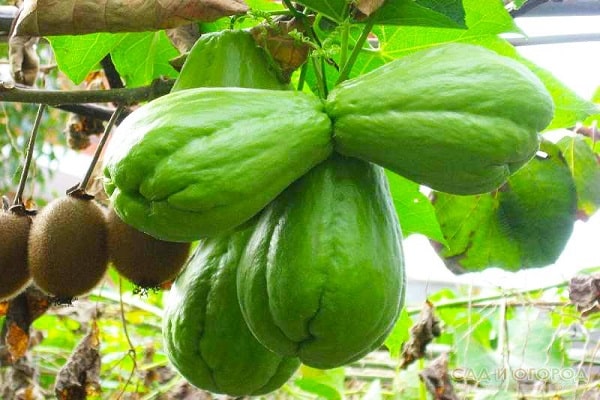
Leaves are used to treat:
- gastrointestinal tract;
- removing stones from the kidneys;
- hypertension.
- atherosclerosis.
They are prepared as follows: pour boiling water over and insist.
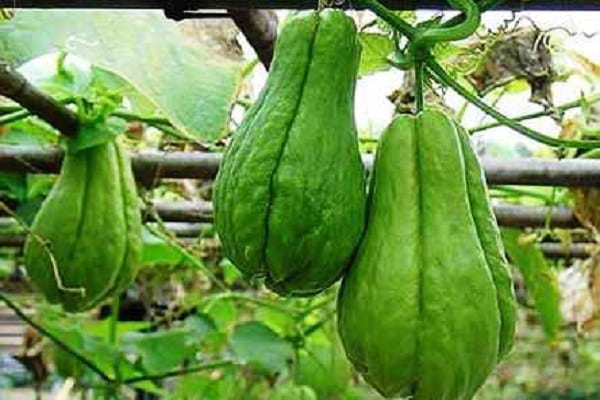
Cucumbers are used to treat:
- thyroid gland;
- ulcers;
- hemorrhoids;
- pancreatitis;
- constipation;
- mastopathy;
- oncological diseases.
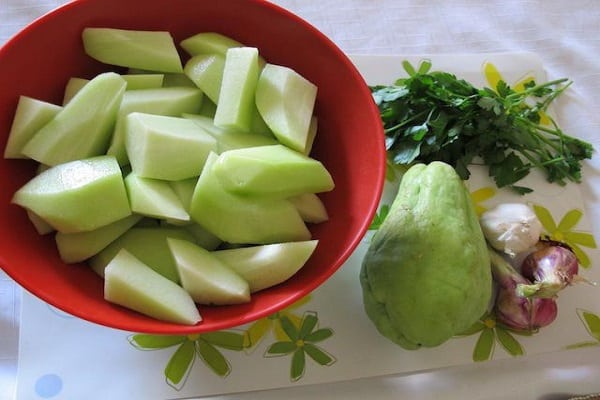
Useful substances that make up
Fruits contain trace elements such as potassium, iron, zinc, sodium, calcium, phosphorus, magnesium, copper, manganese, selenium. It also contains vitamins A, PP, C, E, H, K, and B1, B2, B3, B5, B6, B9. It also contains the following amino acids: valine, leucine, arginine, threonine.
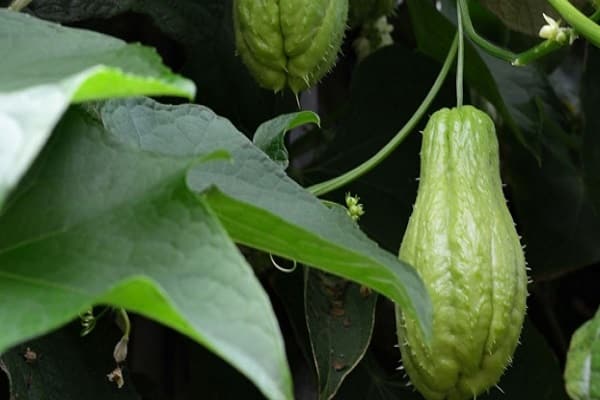
Cultivating Chayote
The ripening period from planting to ripening is 200 days. In central Russia, cultivation is carried out in greenhouses, in open areas they are planted as an ornamental plant, because vegetables do not have time to ripen. In the southern region, the plant is considered perennial and is grown in one place for up to 20 years. Chayote seedlings love fertile soil, therefore, before planting, the soil is fertilized with organic and mineral fertilizers. Usually the soil is prepared in the fall.
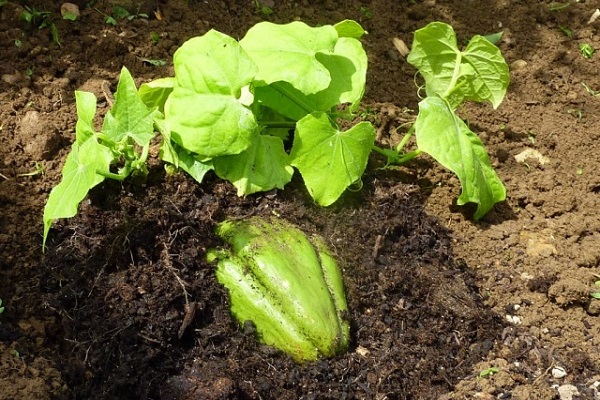
Seed preparation and planting
The vegetable contains one large, finger-sized seed. When stored outdoors, the seed is quickly weathered and loses its ability to germinate. Therefore, the seeds of the fruit are stored before planting, wrapped in damp gauze in the refrigerator. You can plant a whole fruit that contains a seed. The temperature for germination should not fall below 20 degrees, the ripening period is 6-7 months. Therefore, the plants are grown in seedlings, the seed is planted in a warm room in boxes with fertilized soil in February.
Before germination, cover with a film, and then remove it and put the boxes in a sunny place. When shoots germinate, 2-3 shoots are left in the box, the rest are cut and germinated in the usual way.
The transplant is carried out at the onset of a stable 20-degree temperature in the greenhouse. When planting a vegetable without seedlings, in May, they dig into the soil of the greenhouse with a wide part down at an angle. In this case, a third should remain on the surface. Planting is carried out at a distance of 1 square meter.
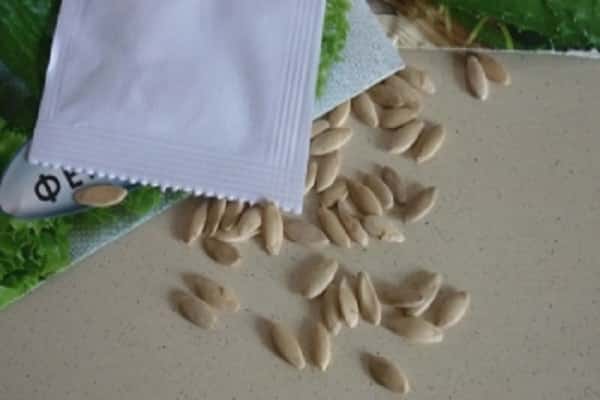
Plant care
When the vine reaches a length of 80 centimeters, pinch the shoots, leaving 2-3 shoots on the sides. Since the cucumber is a creeping plant, it is allowed to run along the trellis. It is usually placed on top of the greenhouse. This plant blooms at the same time - with a day length of less than 12 hours, our gardeners experiment, bringing the period of flowering and fruit setting artificially closer. For this, the greenhouse is covered with a light-blocking material.
This bush is picky about watering, the soil must be kept moist constantly, otherwise the ripening of the fruits will be delayed. After watering, the soil around the stem is loosened, thereby ridding the soil of fungus and other diseases. Also for keeping moisture in the ground. The ground must not freeze, otherwise the plant will die.
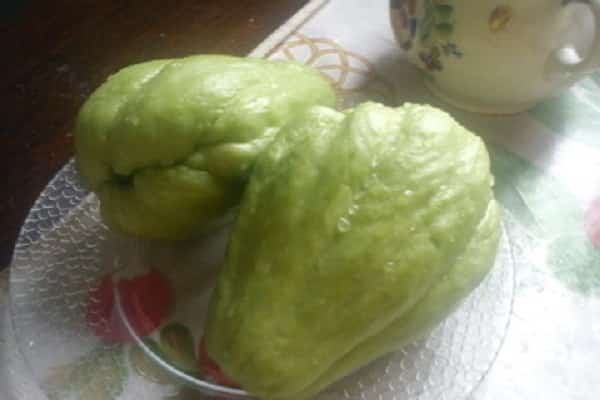
Harvesting
The vegetables are ready to be harvested when the shine appears on the skin and the fruit turns light green. The collection must be completed before the onset of frost, since frozen vegetables cannot be stored and lose their nutritional value.
They also dig underground fruits and use one of the described methods. It is not recommended to store them, since the shelf life of these fruits is short.
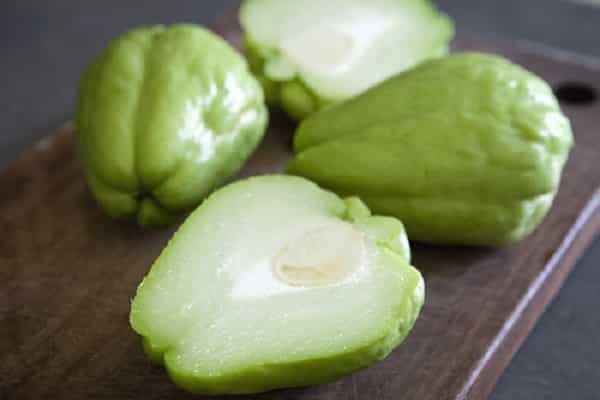
Reviews
This vegetable is grown in Russia not only for fruit production, but also as an ornamental plant. Since the vines look very beautiful around the gazebo and protect from direct sunlight.Therefore, gardeners left a lot of reviews about the cultivation of this exotic vegetable.
Alexander: “I grow this plant in the open field. Basically, it has a decorative function. The fruits do not have time to ripen, since the cold comes in November, and ovaries appear on the plant in August. I plant them every year, in our climate, the root system does not tolerate wintering and rots. Otherwise, the care is normal, watering, weeding, fertilization. If grown in a greenhouse, the harvest is rich. Up to 50 kilograms of healthy vegetables are removed from one plant. "
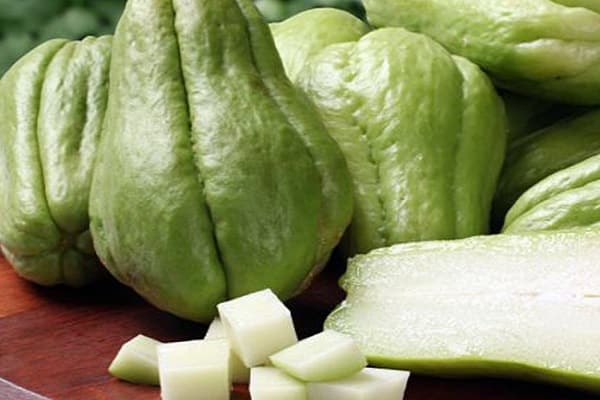
Marina: “I have health problems, a friend recommended to eat Chayote fruits in order to cleanse the body of harmful substances and restore pressure. First, I bought the fruits in the market, and then I decided to grow them myself. After all, a plant can grow well even on a windowsill. Health has improved, atherosclerotic plaques have decreased. I even stopped taking strong medications for blood pressure, reducing the dosage of the drug.


